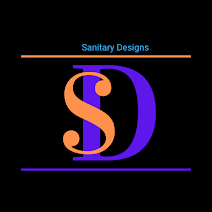Understanding Hazardous Dental Waste Disposal in the Healthcare Industry
The proper disposal of hazardous waste is critical in the dental business to protect the environment and the health of dental personnel and patients. This blog article will look at the most prevalent types of hazardous waste created in dental clinics and provide practical suggestions for their safe and compliant disposal.
Types of Hazardous Dental Waste Practices
1- Dental Amalgam Waste
Dental amalgam waste, which contains mercury, can pose environmental and human health issues if not adequately managed. It is critical to utilize amalgam separators that capture amalgam particles and adhere to optimal standards for their collection and disposal. Dental waste practices can help to protect the environment by following these procedures to minimize mercury exposure.
2- Chemicals & Solvents
Chemicals and solvents in laboratories perform a variety of functions, including cleaning, disinfection, and material manipulation. However, many of these compounds have the potential to harm both human health and the environment. As a result, dental practices must emphasize chemical and solvent safety in their storage, use, and disposal procedures. By following specified rules, professionals can avoid unintentional exposures and limit the environmental impact of these drugs.
3- Lead Aprons & Vests
Lead aprons and jackets used in radiography protect patients from radiation. However, lead is a dangerous material that must be disposed of properly. Dental workers should be aware of the risks of lead exposure and ensure that these protective garments are properly disposed of. The proper disposal solutions will help to reduce environmental effect while protecting employees and the neighborhood.
4- Dental Radiographic Chemicals
The chemicals used in X-ray development must be handled and disposed of with care. Dental practices should follow local legislation and standards for the safe disposal of hazardous chemicals. Proper waste management methods, such as following manufacturer instructions and using authorized disposal containers, are critical for preventing environmental contamination.
5- Developer and Fixer Solutions
Photographic developer and fixer solutions contain chemicals that are harmful to aquatic life and water sources. To avoid water pollution, these solutions must be handled and disposed of carefully. Dental practices should become familiar with proper dental waste disposal options, such as recycling or hiring specialized waste management services. This allows them to actively contribute to water quality preservation and ecosystem protection.
Compliance With Regulatory Requirements
OSHA and EPA standards: Dental operations must follow Occupational Safety and Health Administration (OSHA) and Environmental Protection Agency (EPA) standards for hazardous waste disposal. These policies aim to safeguard the environment while also ensuring the safety of professionals. To ensure compliance, familiarize yourself with the relevant regulations and put in place appropriate practices.
Recordkeeping and Documentation: Accurate records of hazardous waste disposal activities are required for regulatory compliance. These documents include manifests, tracking papers, and certificates of destruction. Documenting the proper disposal of hazardous waste allows such practices to demonstrate their commitment to responsible waste management while also meeting regulatory requirements.
Conclusion
Proper management and dental waste disposal in the dentistry business is critical for environmental protection, contamination prevention, and professional and patient safety. Then, by following regulatory rules and applying best practices, dental practices can help to create a safer, more sustainable healthcare environment. Lastly, remember to adjust and customize the information in this blog post to reflect your specific practices, legislation, and guidelines.
We care when we share....!
You may like these posts
Search for (SD) Blogs...?
List of Royal Followers
Labels
AD SPACE
Recent Posts
3/recentposts
All Time Hits Posts

Safely Disposing Non-Hazardous Pharmaceutical Waste
July 11, 2024

How Do Hospitals Dispose of Liquid Medical Waste?
July 01, 2024

Best Practices for Biomedical Waste Management
January 10, 2025

Overview of Proper Hazardous Laboratory Waste Disposal
July 25, 2024

Understanding Dental Waste Disposal Guidelines
November 14, 2024

Strategies for Sharps Disposal To Prevent Injuries in Healthcare
January 09, 2025

A Complete Tattoo Waste Disposal Guide 2024
July 16, 2024
Popular Posts

Best Practices for Biomedical Waste Management
January 10, 2025

Strategies for Sharps Disposal To Prevent Injuries in Healthcare
January 09, 2025

Rules and Regulations of Medical Waste Disposal Tennessee
January 08, 2025

Why Proper Tattoo Waste Disposal Matters?
January 07, 2025

The Risks of Doing Improper Sharps Disposal
January 17, 2025
Recent Posts

What Are the Dangers of Medical Waste?
January 31, 2025

Reviewing The Effects of Medical Waste On The Environment
January 30, 2025

How to Safely Reuse Sharps Containers and Their Benefits?
January 29, 2025

Things to Avoid While Hiring A Medical Waste Management Company
January 27, 2025

5 Biggest Healthcare Waste Challenges and How to Overcome Them?
January 28, 2025

Tips for Effective Medical Waste Segregation in Hospitals
January 21, 2025

Safely Disposing Non-Hazardous Pharmaceutical Waste
July 11, 2024

Color Coding For Different Medical Waste Containers
August 01, 2024
Copyright Blogger | All Rights Reserved Royal Cricket Blog

0 Comments